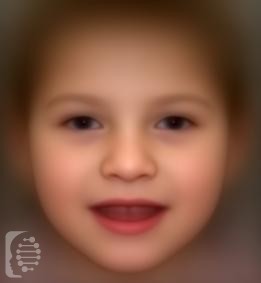What is Angelman syndrome?
Angelman syndrome is a rare genetic condition occurring in 1 in every 15,000 live births, and it affects around 500,000 people worldwide.
Developmental delays, usually related to crawling and walking, can be a first symptom of the syndrome. Angelman syndrome is rarely inherited, although a case within the family may lead to a higher risk of future children developing the syndrome.
Health conditions associated with Angelman syndrome include seizures, sleep issues, severe speech delay, and intellectual disability. Obesity can be a problem in adolescents with Angelman syndrome due to a large appetite.
What gene change causes this syndrome?
Angelman syndrome occurs due to mutations in the UB3A gene.
Microdeletion inheritance occurs when there is a deletion of several genes on a chromosome. The specific chromosome on which the deletions occur will determine the syndrome they cause.
Normally we inherit one copy of each chromosome pair from each biological parent. In the case of disomy, both copies of the chromosome pair are received from one parent and none from the other. This is also often known as uniparental disomy. With most genes this is not an issue, and will not cause any medical or health issues. However when specific genes are concerned, issues with genomic imprinting, can cause specific genetic syndromes.
Genes, locations and inheritance modes:
GABRB3, 15q12 – Microdeletion, Disomy
UBE3A, 15q11.2 – Microdeletion, Disomy
CDKL5, Xp22.13 – Microdeletion, Disomy
Listed genes may be or may be not included in all cases, different genes contribute to different characteristics.
What are the main symptoms of Angelman syndrome?
The main symptoms of Angelman syndrome include developmental delays and issues with walking and balance. Seizures are a major symptom of the condition. Most individuals with Angelman syndrome will have minimal if any speech. Sleep issues are associated with Angelman syndrome, although these may improve over time and with intervention. Individuals with Angelman syndrome often have happy and excitable personalities, and frequent smiling and laughing are common symptoms.
Possible clinical traits/features:
Abnormality of the dentition, Abnormality of the tongue, Blue irides, Behavioral abnormality, Cerebral cortical atrophy, Absent speech, Brachycephaly, Broad-based gait, Strabismus, Limb tremor, Scoliosis, Protruding tongue, Sporadic, Sleep-wake cycle disturbance, Progressive gait ataxia, Muscular hypotonia, Macroglossia, Mandibular prognathia, Intellectual disability, progressive, Intellectual disability, severe, Neurological speech impairment, Myopia, Incoordination, Hypopigmentation of the skin, Hypoplasia of the maxilla, Global developmental delay, Cognitive impairment, Hyperactivity, Hernia of the abdominal wall, Hyperreflexia, Autosomal dominant inheritance, Paroxysmal bursts of laughter, Wide mouth, Nystagmus, Obesity, Seizure, Widely spaced teeth, Constipation, Clumsiness, Drooling, Deeply set eye, EEG abnormality, Motor delay, Malar flattening, Postnatal microcephaly, Fair hair, Flat occiput, Feeding difficulties in infancy, Exotropia.
How is it diagnosed?
To find out if someone has a diagnosis of Angelman syndrome, it is important to have a consultation and evaluation with a clinical genetic specialist. Specialists may also suggest specific genetic testing or other types of tests to help reach a diagnosis. FDNA’s AI technology can help speed up the diagnostic process by analyzing facial features and other health information.

